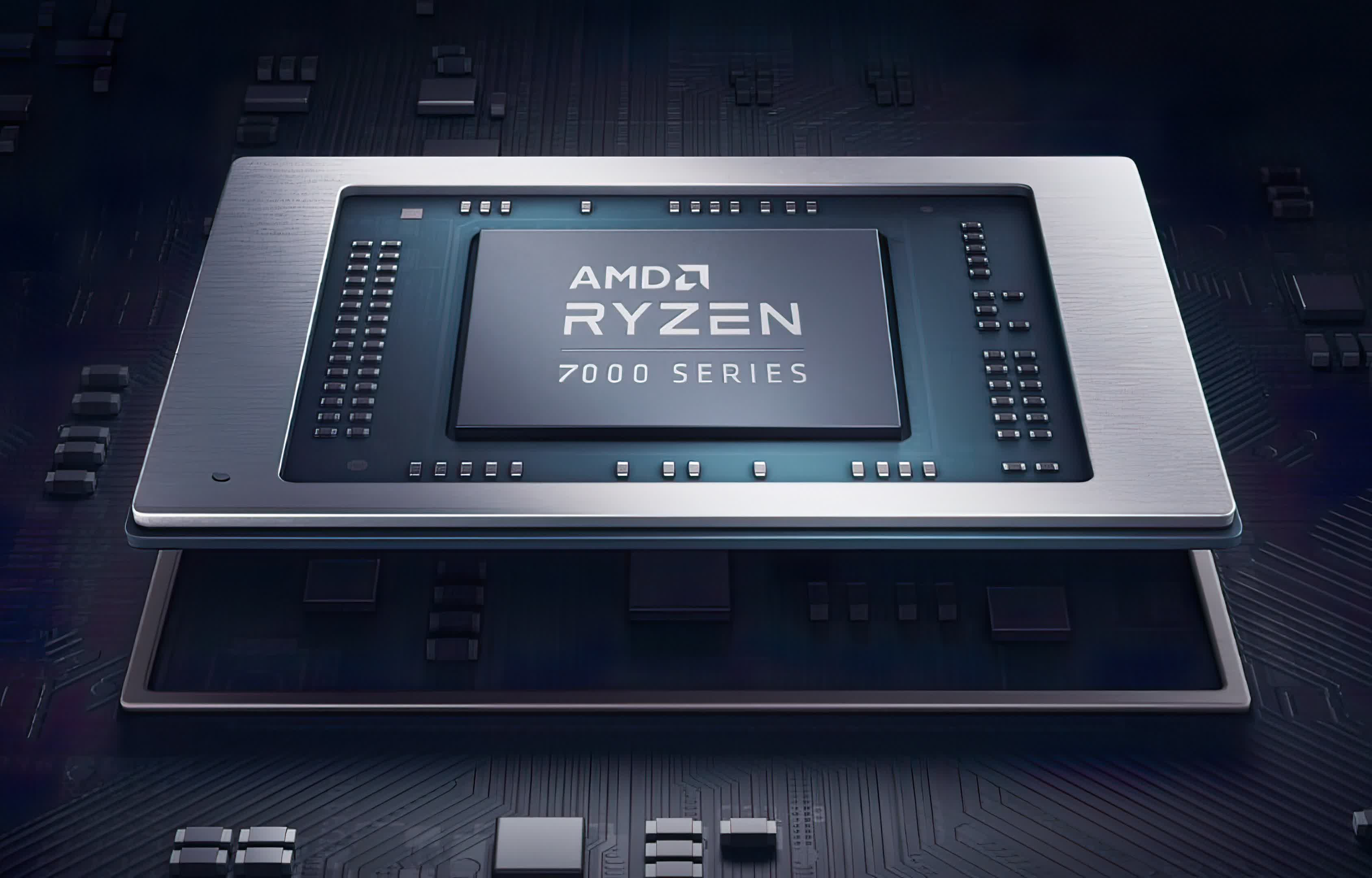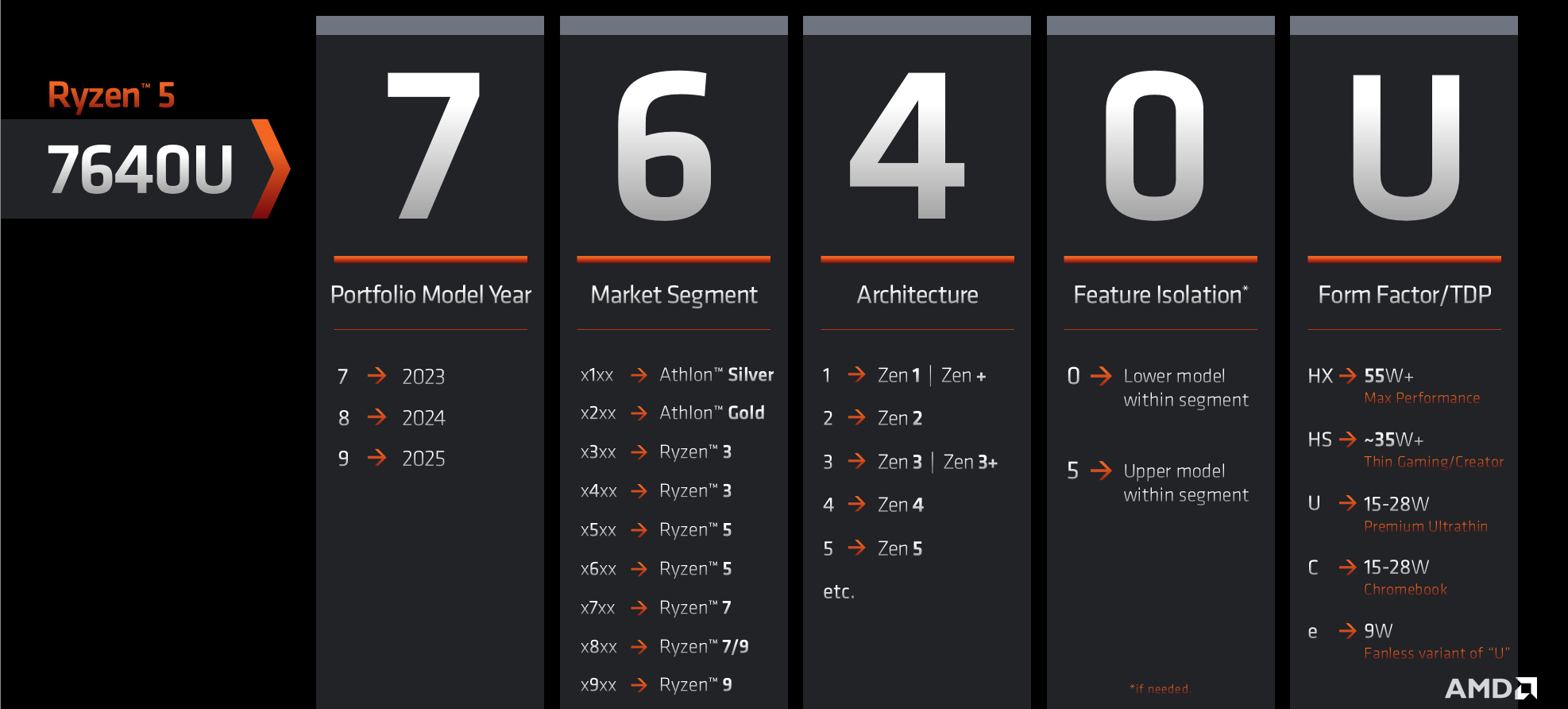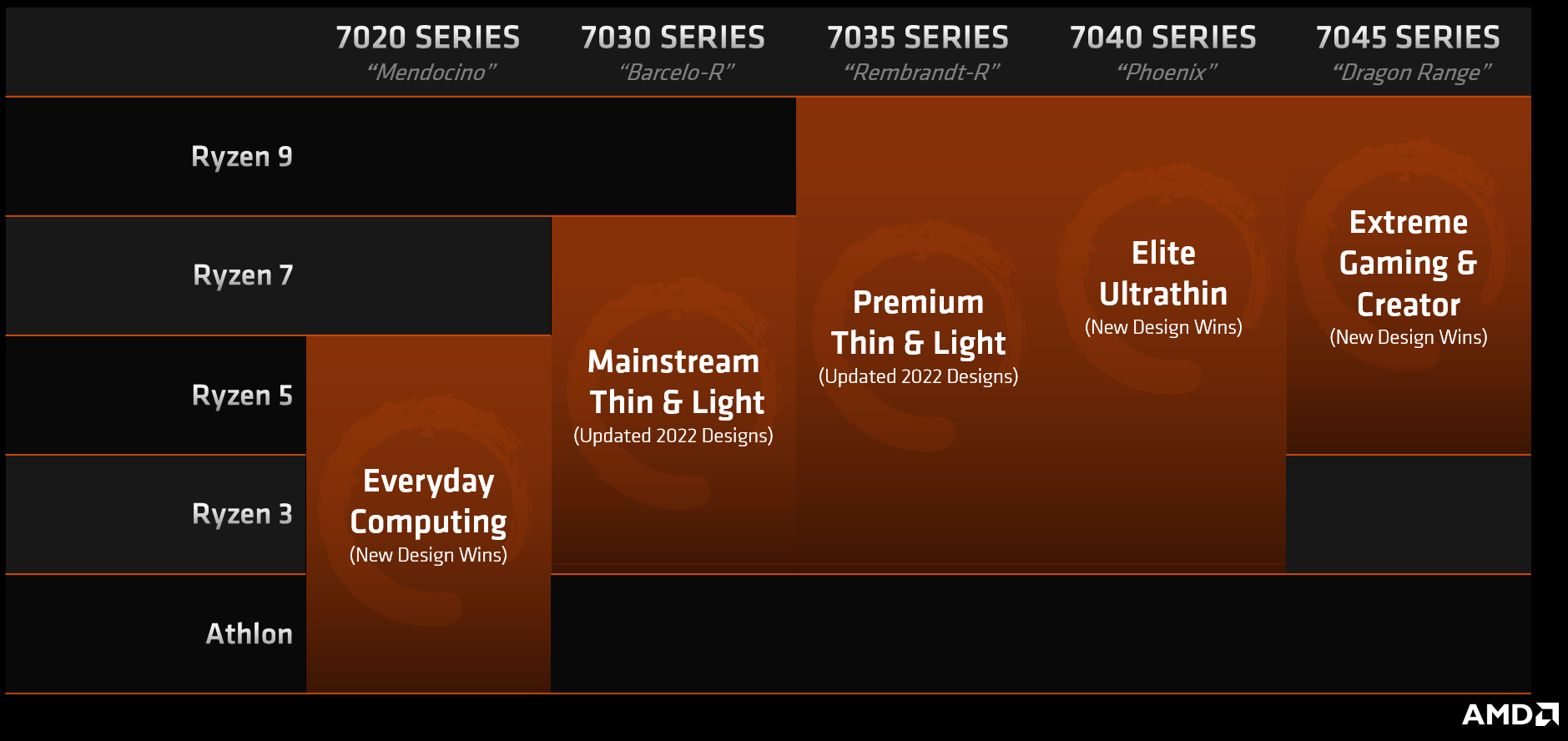headtr1p
Posts: 15 +1
In brief: Team Red has announced a new naming convention for its mobile processors in 2023 and beyond. The new AMD naming system is meant to clarify the processor's capabilities and should be easier to decode for enthusiasts and average users. It will now be possible to know the Zen architecture of an AMD mobile processor just by looking at the name.

Robert Hallock, AMD's Director of Technical Marketing, explained that the company's new naming scheme is technical yet straightforward. An enthusiast should be able to decode the number, while the average user can see that "a higher number simply connotes higher CPU performance."
It's more descriptive than AMD's previous naming convention, as each digit means something. The first digit represents the processor's launch year, with AMD's Ryzen 7000 series assigned to 2023. Therefore, the 8000 series will arrive in 2024, and so forth. The second digit denotes the market segment and reveals if it's a Ryzen 3, 5, 7, or 9 (or Athlon Silver/Gold). We do see some doubling up here as an AMD Ryzen 73xx and 74xx are both Ryzen 3s, but naturally, the Ryzen 74xx would be a more powerful model.

The third digit usefully reveals the CPU's Zen architecture. For example, an AMD Ryzen 7x2x is a Zen 2, whereas an AMD Ryzen 7x4x implements Zen 4. So even though we have two 7000 series processors, they are based on different Zen architectures and could substantially differ in performance. Average users could think both 7000 series CPUs are based on the new Zen 4 architecture if they overlook that third digit, so be watchful.

The changes come ahead of AMD's "Mendocino" launch, expected to arrive in Q4. The 7020 series Mendocino chips are older Zen 2 architecture aimed at everyday computing. The highly anticipated Zen 4 "Dragon Range" chips will launch in 2023. Team Red's mobile lineup for 2023 includes five different SoCs with new designs and refreshed 2022 systems.
The new naming scheme applies from the low-end Mendocino series through the high-end Dragon Range. We can see the third digit denoting the Zen architecture, with Phoenix and Dragon Range using the 7x4x naming convention, as both chips are based on Zen 4.
In early 2022, AMD boasted an impressive growth of 49% in notebook shipments with Ryzen processors. It will be interesting to see if they can keep increasing their market share in the notebook space.
https://www.techspot.com/news/95915-amd-announces-new-naming-scheme-2023-mobile-processors.html
